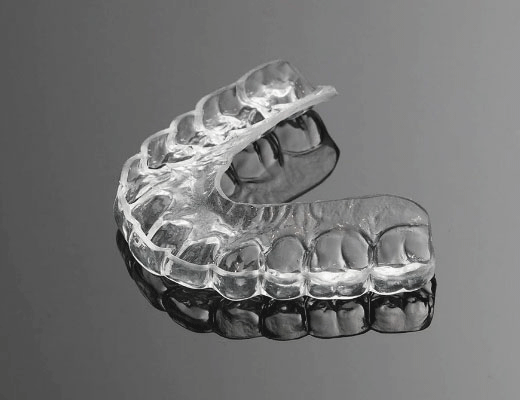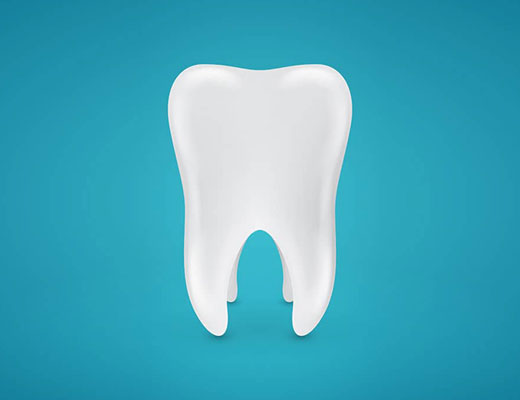Services
Family Dentistry
Family dentistry is a branch of dentistry that focuses on providing comprehensive dental care for individuals of all ages, from infants to seniors. Family dentists are trained to treat a wide range of dental conditions, including preventive care, restorative care, and cosmetic dentistry. They also provide education and counseling on oral hygiene and healthy lifestyle habits.
Benefits of Family Dentistry
There are many benefits to choosing a family dentist for your family’s dental care. Here are just a few:
Convenience: Family dentists offer a wide range of services under one roof, so you can get all your family’s dental care in one place. This can save you time and money.
Personalized Care: Family dentists take the time to get to know you and your family’s dental needs. They will develop a personalized treatment plan that is tailored to your specific needs.
Established Rapport: Family dentists build relationships with their patients over time. This can make it easier for you to feel comfortable and at ease during your dental appointments.
Early Detection and Prevention: Family dentists can detect and treat dental problems early on, when they are usually easier and less expensive to treat. They can also provide education and counseling on oral hygiene and healthy lifestyle habits to help prevent dental problems from developing in the first place.
Traditional & Clear Aligners
Forget the days of metal brackets and painful adjustments. The future of teeth straightening is here, and it’s smiling brighter than ever thanks to clear teeth aligners. These innovative, virtually invisible trays are revolutionizing orthodontics, offering a discreet and comfortable path to a straighter, more confident grin.
Invisible Transformation
Unlike their traditional metal counterparts, clear aligners are crafted from a smooth, transparent plastic. They fit snugly over your teeth, applying gentle pressure to gradually guide them into their ideal positions. No wires, no brackets, just a subtle shift towards a perfect smile, all without compromising your appearance.
Comfort and Convenience
Gone are the days of dietary restrictions and the constant worry about broken brackets. Clear aligners are removable, allowing you to enjoy your favorite foods without fear. Brushing and flossing become a breeze, and you can easily take them out for special occasions. No more hiding behind your hands or avoiding social gatherings – embrace your smile with newfound confidence.
Tailored Treatment
Your journey to a straighter smile starts with a personalized consultation with your dentist. They’ll create a digital 3D model of your teeth, plotting the precise movements needed to achieve your desired outcome. Each set of aligners is custom-made for your unique smile, ensuring a comfortable and effective treatment.
Orthodontics
Were you born with a straight smile and a perfect bite? If so, you’re one of the lucky ones. For most of us, we must choose orthodontics to correct our teeth. Whether you go for clear aligners or traditional braces, these both can help you find that smile you’ve always wanted!
What Is Orthodontics?
Orthodontics is a form of dentistry that focuses on straightening teeth and fixing bite issues. Braces are one of the most common appliances used in orthodontics. Other popular devices include retainers, tightening bands, and clear aligners.
While most people get orthodontic treatment when they’re younger, these procedures work for all ages. However, treatment during youth is recommended since children’s teeth are easier to move.
Why Choose Orthodontics?
Patients often choose orthodontics to treat the following issues:
- Crooked teeth
- Overlapping teeth
- Crowded teeth
- Rotated teeth
- Impacted teeth
- Overbites
- Underbites
Routine Cleanings & Examinations
At your first routine dental exam, your dentist will talk with you about your diet, oral care habits, any medical issues you have, any medications you are taking, and your smoking and alcohol use.
At all other routine dental exams, your dentist will examine your teeth, gums, mouth, and overall oral health. They will also talk with you about any new medical issues or problems you are having with your teeth, gums, and mouth.
During a routine dental exam, our dentists will look to see if you have any cracks or damage to your teeth or faulty fillings, check your bite, and determine if you have any tooth decay or periodontal disease. Then they will make recommendations based on that information.
A Quick Overview of a Routine Dental Exam
- The dentist will examine your oral health, including your teeth, gums, jaws, bite, etc.
- For some routine dental exams, the dentist might request X-rays.
- A dental hygienist will clean your teeth. The first step is scaling, when the hygienist uses a small metal tool to scrape tartar and plaque from your teeth.
- The dental hygienist will then polish and floss your teeth.
Partials
Partial dentures are a common solution for individuals who have lost multiple teeth. These removable dental appliances are designed to replace missing teeth and restore both the function and appearance of your smile.
How Do Partial Dentures Work?
Partial dentures typically consist of artificial teeth attached to a gum-colored base. They are held in place by clasps that attach to your existing teeth. These clasps are designed to be discreet and blend in with your natural teeth.
Types of Partial Dentures
Conventional Partial Dentures: These are the most common type of partial denture. They are made of acrylic resin and metal and are held in place by clasps that attach to your natural teeth.
Flexible Partial Dentures: These dentures are made of a flexible plastic material that is more comfortable and less noticeable than traditional metal clasps.
Benefits of Partial Dentures
Improved Appearance: Partial dentures can help to restore your smile and boost your self-confidence.
Improved Speech: Missing teeth can affect your ability to speak clearly. Partial dentures can help to improve your speech.
Oral Cancer Screenings
Oral cancer is a serious health concern that affects millions of people each year. Early detection is critical for successful treatment and a positive outcome, so it’s essential to have regular oral cancer screenings as part of your preventive dental care. This post will look at the basics of oral cancer and the importance of oral cancer screenings.
The professional team at Neligh Family Dentistry is dedicated to providing the community with the most advanced and state-of-the-art technology in diagnosing and preventing issues from becoming more severe and threatening.
About Oral Cancer
Oral cancer occurs in the mouth, including the lips, tongue, gums, and throat. It can develop in any part of the mouth and can spread quickly if left untreated. Oral cancer can cause various symptoms, including pain, swelling, and changes in the appearance of the jaws and the structural integrity of your oral health.
The Importance of Oral Cancer Screenings
Oral cancer screenings are essential to preventive dental care because they can help detect oral cancer in its early stages when it is most treatable. During the screening, our dentists will examine your mouth, tongue, lips, and throat for signs of cancer or precancerous changes.
Dentures
Dentures can give you the smile you’ve always wanted! They look great, they’re easy to use, and they last for several years. Furthermore, there are multiple types of dentures to choose from. If you’re interested in this dental device, it’s important to choose an experienced and qualified dentist.
What Are Dentures?
Dentures are a common dental appliance for people around the world. They’re made of materials like resin, acrylic, metal, nylon, and porcelain. Dentures are used to replace missing teeth and improve your oral health.
Benefits of Dentures
Dentures provide a wide variety of advantages for the patient. For the millions of people worldwide missing teeth, dentures can offer the following benefits:
- Replace lost or decayed teeth
- Improve chewing ability
- Make talking easier and more clear
- Help prevent facial collapse, which can happen when missing teeth
Preventative Dentistry
Regular checkups and cleanings, fluoride treatments, and dental sealants to prevent cavities, gum disease, and other dental problems.
Benefits of Regular Dental Care
Maintaining regular dental care with a dentist offers numerous benefits for overall health and well-being.
Preventive Approach: Early detection and treatment of dental issues can prevent more serious and costly problems from developing in the future.
Improved Oral Health: Regular cleanings and preventive care can significantly reduce the risk of cavities, gum disease, and other oral infections.
Enhanced Self-Confidence: A healthy and attractive smile can boost self-esteem and confidence in social interactions.
Overall Well-Being: Good oral health is linked to a reduced risk of systemic health problems, such as heart disease, stroke, and diabetes.
Regular visits to a dentist are essential for maintaining optimal oral health and preventing dental problems. By prioritizing preventive care and addressing concerns early on, you can enjoy a lifetime of healthy, beautiful smiles.
Gum Disease Therapy
Gum disease, a common dental condition, occurs when bacteria in plaque builds up and irritates the gums. If left untreated, it can lead to serious oral health problems, including tooth loss and systemic health issues. Fortunately, there are effective treatments available to manage and reverse gum disease.
Non-Surgical Treatments
Scaling and Root Planing: This procedure involves removing plaque and tartar from the tooth surfaces and beneath the gum line. It also smooths the root surfaces to prevent bacteria from reattaching.
Antibiotics: In some cases, antibiotics may be prescribed to help control bacterial infection. These can be taken orally or applied directly to the affected area.
Surgical Treatments
For more advanced cases of gum disease, surgical intervention may be necessary. Common surgical procedures include:
Flap Surgery: This involves lifting the gum tissue to expose the tooth root, allowing for thorough cleaning and removal of diseased tissue.
Soft Tissue Grafting: This procedure involves grafting tissue from another part of the mouth to cover exposed root surfaces and promote tissue regeneration.
Crowns & Bridges
Crowns
Crowns protect the integrity of a tooth or completely change its shape and appearance with dental crowns. In our office, we offer crown treatments with state-of-the-art technology to make the process quick and simple.
Crowns can be used to restore the appearance and functionality of the tooth for patients who have had any one of the following:
- Tooth decay
- A cracked tooth
- A broken tooth
- A dental bridge (the crown can hold the bridge in place)
- Misshapen or discolored tooth
Bridges
Bridges allow gaps between your teeth due to extractions to be filled in an aesthetic, functional way. A dental bridge is mounted on existing teeth with a prosthetic tooth between them.
Reasons why patients require crowns and bridges
- Protecting a cracked or chipped area in a permanent tooth
- Concealing signs of tooth decay at the root of the tooth and slowing tooth loss
- Providing a stable tooth structure to support the root structure of a damaged or broken tooth
Oral Surgery
In the best dental practices, oral surgery is the last resort for patients. This is unfortunate when you consider it’s also one of the most daunting procedures a person can have. The good news is that the right surgery can be the key to preserving your mouth, and your overall oral health.
Common Types of Oral Surgery
Surgery for the mouth may include any of the following procedures:
Maxillofacial: This is a general term for many oral surgeries. Whether it’s for impactions or damaged gums, the idea is to improve, reset, or align the mouth, so you can fend off chronic disease and recover from any potential injuries or illnesses. For instance, if your wisdom teeth begin to hurt, you can use this common surgery to remove them.
Bite: Overbites and underbites are common problems, but they can also cause a lot of trouble over time. Because they affect your ability to chew, speak, and even breathe, you can use this surgery to move the components of your mouth into a less damaging position.
Implants: The surgical part of the implant position occurs when the dentist places a post inside the jaw. Over time, the bone in the jaw will fuse to the post. When that occurs, the dentist will top it with a permanent artificial tooth.
Implant Restoration
Restoring dental implants involves attaching replacement teeth, like crowns or bridges, to the implants themselves. This creates a permanent and natural-looking solution for missing teeth.
The Restoration Process
The restoration process typically involves a dentist and a prosthodontist (a specialist in restoring teeth).
They work together to design and place the perfect prosthetic teeth for your smile.
Customization is key: The replacement teeth are custom-made to match the size, shape, and color of your surrounding teeth for a seamless look.
Strength and stability: Unlike traditional dentures, implant restorations are secured directly to the jawbone, providing exceptional strength and stability when biting and chewing.
Long-lasting solution: With proper care, dental implant restorations can last for many years, offering a reliable and durable replacement for missing teeth.
Root Canals
When a toothache strikes, the mere mention of a root canal can send shivers down the spine. But don’t let fear lead to tooth loss. A root canal is often a tooth hero, restoring health and function while preventing the need for extraction.
The Root of the Issue
Inside each tooth lies a delicate pulp chamber, containing nerves, blood vessels, and connective tissue. When infection or inflammation strikes this pulp, pain, sensitivity, and swelling can ensue. A root canal addresses this by removing the diseased pulp and cleaning the root canals, preventing infection from spreading and saving the tooth.
The Process
- Numbing the Area: Local anesthetic ensures a comfortable experience.
- Accessing the Pulp: A small opening is created in the tooth’s crown.
- Removing the Pulp: Delicate instruments extract the inflamed pulp.
- Cleaning and Shaping: Root canals are meticulously cleaned and shaped.
- Filling and Sealing: A biocompatible material securely fills and seals the canals.
Veneers
Veneers are thin covers that can be placed over the front of your teeth to hide chips, cracks and other imperfections. If you have misshapen teeth or teeth that have gaps between them, veneers can make your teeth appear more evenly spaced and more conventionally beautiful.
Types of Veneers
There are two primary types of veneers:
Porcelain Veneers: These are the most popular type of veneer, known for their durability, natural appearance, and resistance to staining. Porcelain veneers are custom-made to match the color and shape of your natural teeth.
Composite Veneers: These are made from a tooth-colored resin material. Composite veneers are less expensive than porcelain veneers, but they are also less durable and more prone to staining.
Benefits of Dental Veneers
Improved Appearance: Veneers can significantly enhance the appearance of your smile by correcting a variety of cosmetic dental issues, such as chipped, cracked, discolored, or misaligned teeth.
Durability: Porcelain veneers are highly durable and can last for many years with proper care.
Stain Resistance: Porcelain veneers are resistant to staining, making them a great option for people who enjoy drinking coffee, tea, or wine.
Natural Appearance: Veneers can be custom-made to match the color and shape of your natural teeth, resulting in a beautiful, natural-looking smile.
Fillings
Fillings are used to treat cavities or small holes in a tooth. Our team removes the decayed tissue and fills the hole with a strong material to keep your teeth healthy.
Dental fillings are used to repair tooth decay and restore the tooth’s function and appearance.
Several types of filling materials are available, each with its own advantages and disadvantages. Here are some of the most common types:
Amalgam Fillings
Composition: A mixture of metals, primarily silver, tin, copper, and mercury.
Advantages: Durable, long-lasting, and relatively affordable.
Disadvantages: Not aesthetically pleasing, can cause tooth sensitivity, and contains mercury, which some people may have concerns about.
Composite Resin Fillings
Composition: A tooth-colored material made of plastic resin and glass particles.
Advantages: Aesthetically pleasing, bonds directly to the tooth structure, and can be customized to match the color of your natural teeth.
Teeth Whitening
Professional teeth whitening is a popular cosmetic dental procedure that can help you achieve a brighter, more youthful smile. This treatment can significantly lighten teeth that have become stained or discolored over time due to factors such as:
Age: As we age, our teeth naturally darken.
Lifestyle: Smoking, drinking coffee, tea, or red wine can stain teeth.
Certain Medications: Some medications can cause tooth discoloration.
How Does Professional Teeth Whitening Work?
Professional teeth whitening involves applying a high-concentration whitening gel to your teeth. This gel contains a bleaching agent, typically hydrogen peroxide or carbamide peroxide, which breaks down stains and whitens your teeth.
The Procedure
Initial Consultation: Your dentist will assess your oral health and discuss your expectations for the whitening treatment.
Professional Cleaning: Your teeth will be thoroughly cleaned to remove plaque and tartar, which can interfere with the whitening process.
Whitening Gel Application: Your dentist will apply the whitening gel to your teeth and may use a special light to accelerate the whitening process.
Treatment Time: The treatment typically takes 60-90 minutes per session. Multiple sessions may be required for optimal results.
Benefits of Professional Teeth Whitening
Dramatic Results: Professional teeth whitening can significantly lighten your teeth, often by several shades.
Quick and Effective: The treatment is relatively quick and can provide noticeable results in just one session.
Long-lasting Results: With proper oral hygiene and avoidance of staining substances, the results of professional teeth whitening can last for several years.
Safe and Painless: When performed by a qualified dentist, professional teeth whitening is a safe and painless procedure.
At-Home Whitening Kits
While over-the-counter whitening kits can be effective, they may not provide the same level of results as professional whitening. Professional-strength whitening gels are more potent and can achieve more significant whitening results. Additionally, a dentist can monitor the whitening process and ensure that the treatment is not causing any damage to your teeth or gums.
Dental Bonding
Dental bonding is a versatile cosmetic dental procedure that can be used to repair chipped or cracked teeth, close gaps between teeth, and improve the appearance of discolored or misshapen teeth.
How Does Dental Bonding Work?
The process of dental bonding involves applying a tooth-colored resin material to the tooth surface. The dentist shapes and sculpts the resin to the desired contour and then hardens it with a special light. Once the resin is hardened, it is polished to a smooth, natural-looking finish.
Benefits of Dental Bonding:
Aesthetically Pleasing: Dental bonding can significantly improve the appearance of your smile by correcting imperfections and enhancing the overall look of your teeth.
Conservative Treatment: Unlike other cosmetic procedures like veneers or crowns, dental bonding is a minimally invasive treatment that requires minimal tooth preparation.
Quick and Painless: The procedure is typically completed in one dental visit and requires little to no anesthesia.
Cost-Effective: Compared to other cosmetic dental procedures, dental bonding is a more affordable option.
Versatile: Dental bonding can be used to address a wide range of dental issues, including chipped, cracked, or discolored teeth, as well as gaps between teeth.
Limitations of Dental Bonding
While dental bonding is a great option for many, it does have some limitations:
Staining: The bonding material can be susceptible to staining, especially from dark-colored foods and beverages like coffee, tea, and red wine.
Durability: While durable, dental bonding may not be as strong as other restorative materials like porcelain veneers or crowns, especially when used to repair heavily damaged teeth
Not Suitable for All Cases: Dental bonding may not be suitable for individuals with severe tooth damage or discoloration. In such cases, other treatments like veneers or crowns may be more appropriate.
If you are considering dental bonding, it’s important to consult with a qualified dentist to determine if it’s the right treatment for you. Your dentist can assess your specific needs and recommend the best course of action.
TMJ and TMD
Temporomandibular joint (TMJ) and temporomandibular disorder (TMD) affect the jaw joint and the muscles that control jaw movement. These conditions can cause various symptoms, including pain, discomfort, and difficulty opening and closing the jaw. In this post, we’ll explore the basics of TMJ and TMD, as well as some of the most common causes and treatments.
Our professional team is proud to serve the local community with quality dental care services and education, such as treating jaw and tooth pain.
What are TMJ and TMD?
The temporomandibular joint is the joint that connects the jawbone to the skull. Temporomandibular disorder (TMD) is a group of conditions that has to do with the movement of this joint, including completely disabling your ability to open and close your mouth without significant pain. The pain does not necessarily stay localized, as it can often affect hearing and contribute to consistent migraines for many patients.
What are the Common Causes of TMD?
Several factors can contribute to the development of TMD, including the following list.
Arthritis
Arthritis in the jaw joint can cause inflammation and pain due to overuse or extending your range of motion beyond what it can usually do. Arthritis is a group of degenerative diseases that occurs distinctly due to age, one of the most common causes of TMD.
Stress
Stress-related disorders can cause certain things, such as the grinding of the teeth (bruxism), which can lead to TMD. Stress can also cause restricted movement in specific joints as they will be in a state of tension throughout the day, sometimes unbeknownst to the patient.
Injuries
Any injuries, particularly around the head or jaw, can cause TMD. This can result from trauma directly to the joint or caused indirectly by having to substitute specific actions with other joints, tissues, or muscles if not adequately treated.
Regardless of the cause or symptom, reaching out to the proficient team is your best course of action so that we can review your situation and take the best possible course of action.
White Spot Lesions
White spot lesions can occur due to various factors, including poor oral hygiene, diet, and certain medical conditions.
Factors
These factors can lead to an imbalance of mineralization and demineralization in the tooth enamel, resulting in white spot lesions.
Poor Oral Hygiene
Neglecting to brush and floss regularly can lead to the buildup of plaque and bacteria on the teeth, eroding the tooth enamel and leading to white spot lesions.
Diet
Consuming a diet high in sugars and carbohydrates can also contribute to forming white spot lesions. These substances can provide a food source for harmful bacteria in the mouth, producing acid and eroding the tooth enamel.
Medical Conditions
Certain medical conditions, such as acid reflux and eating disorders, can also increase the risk of developing white spot lesions.
White Spot Lesion Treatment Options
If you have white spot lesions, several treatment options are available to help restore the appearance and health of your teeth. Here are some of the most common treatment options:
Microabrasion
Microabrasion is a minimally invasive procedure involving removing a thin layer of enamel from the affected tooth using a soft abrasive material. This can help remove the white spot lesion and improve the tooth’s overall appearance.
Topical Fluoride
Topical fluoride treatments can help to remineralize the tooth enamel and prevent further demineralization. This can be an effective treatment for mild to moderate white spot lesions.
Dental Bonding
Dental bonding involves the application of a tooth-colored composite resin to the affected tooth. This can help mask the appearance of the white spot lesion and improve the tooth’s overall appearance.






















